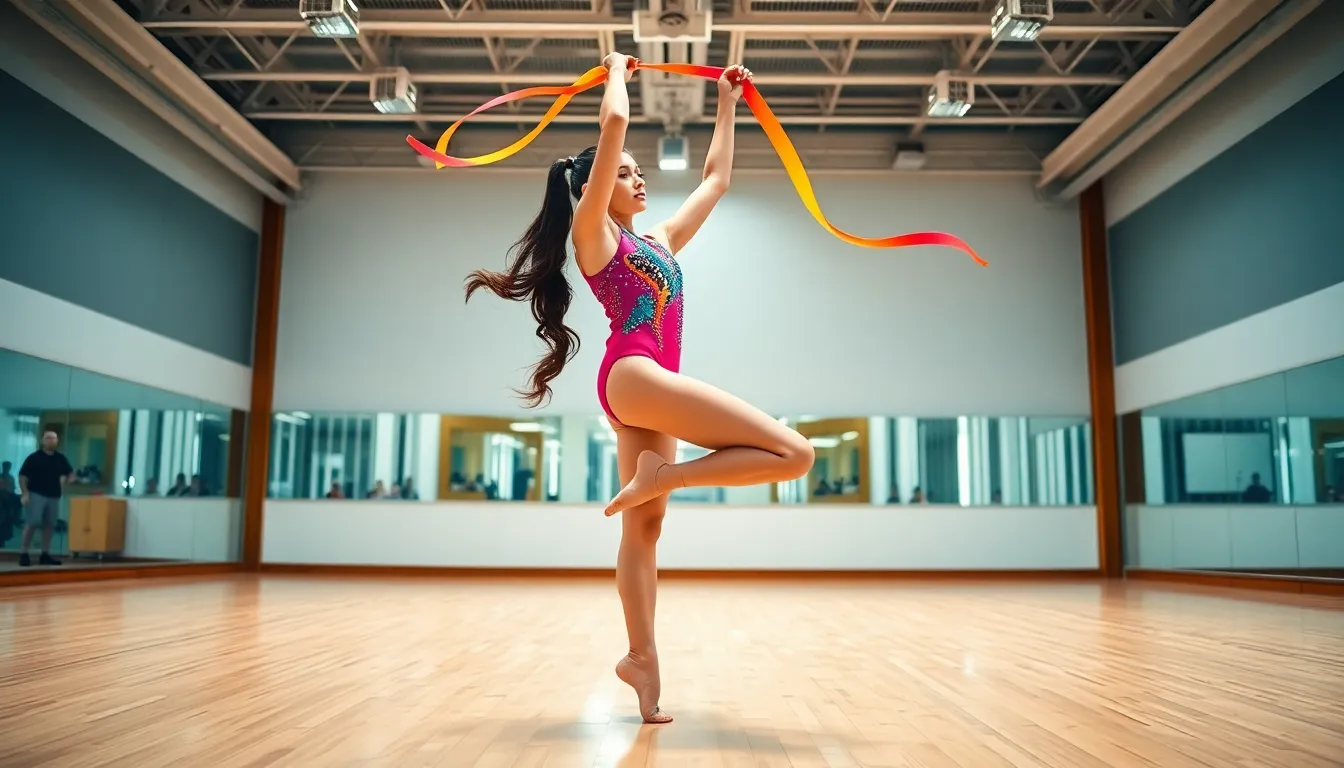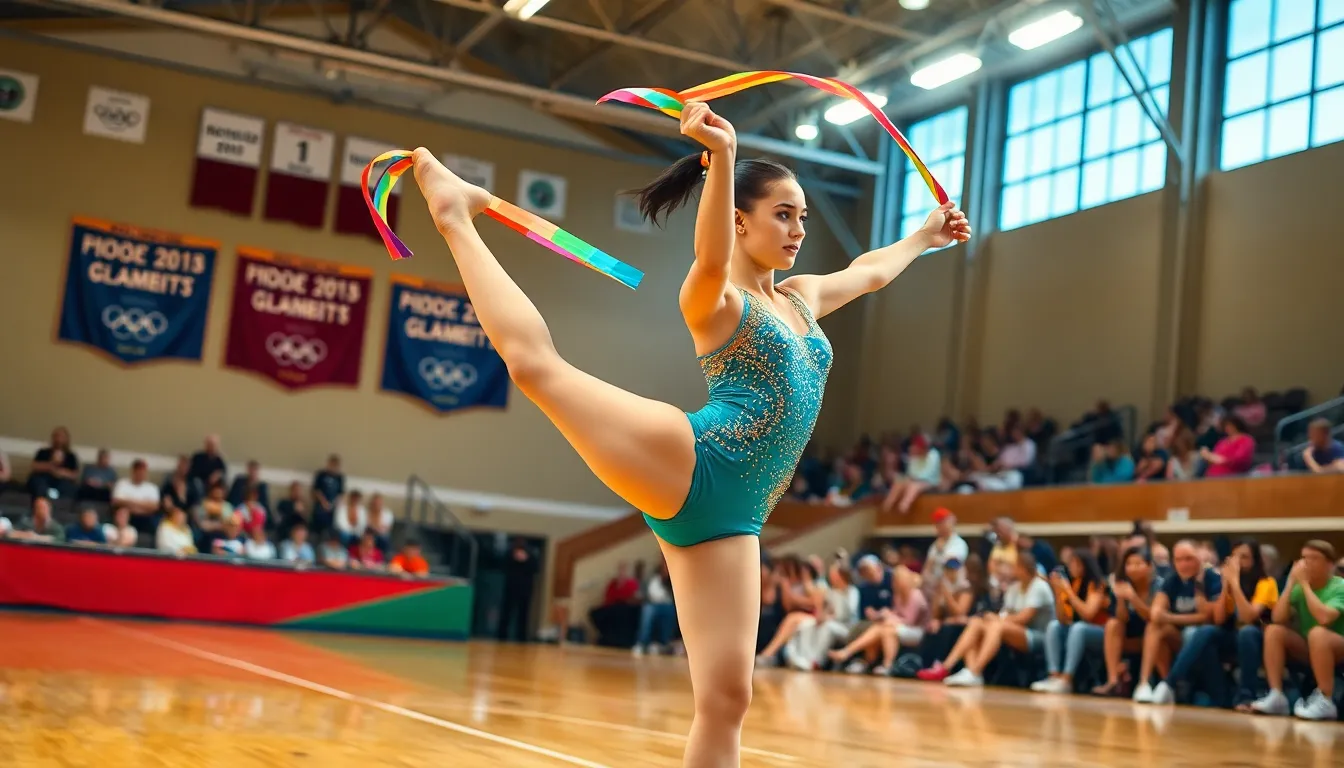Rhythmic gymnastics merges athleticism with artistry, captivating audiences around the globe. As this unique discipline continues to evolve, both seasoned athletes and newcomers are making waves with impressive performances and inventive techniques. This article dives into the latest in the world of rhythmic gymnastics, highlighting recent competitions, noteworthy athletes, and the future of this enthralling sport.
Table of Contents
ToggleOverview of Rhythmic Gymnastics

Rhythmic gymnastics is a captivating blend of dance and acrobatics, where athletes perform choreographed routines accompanied by music. Each routine incorporates apparatus such as ribbons, hoops, balls, clubs, and ropes. Since its introduction as an Olympic sport in 1984, rhythmic gymnastics has grown in popularity, showcasing the grace and skill of its athletes. Competitors are judged on their artistry, execution, and overall presentation, making it not just a sport but an artistic expression. This sport demands not only physical strength and flexibility but also creativity and precision, positioning it as one of the most visually stunning events at competitions.
Recent Competitions and Highlights
The latest competitions in rhythmic gymnastics have illuminated the exceptional talent present in the sport. Recent events, such as the World Championships in Sofia and various Grand Prix series, have captured the attention of fans worldwide.
Notable Athletes to Watch
Among the standout performances, gymnasts like Dina Averina and her sister Arina have consistently impressed judges and spectators alike. Dina, the 2021 World Champion, showcases a remarkable combination of technical skill and artistic flair. Meanwhile, countries like Bulgaria and Japan are also producing formidable competitors who are sure to make an impact in upcoming events.
Emerging Talents in the Sport
Plus to established stars, new talents are emerging on the scene. Athletes such as the young Ukrainian gymnast Anna Melnyk have caught the eye with their innovative routines and sheer talent. These newcomers showcase the future of rhythmic gymnastics, bringing fresh ideas and vibrancy to the sport, promising exciting competitions ahead.
Innovations in Technique and Performance
Rhythmic gymnastics is continually evolving, with innovations in techniques and performances setting new standards. The infusion of contemporary dance styles into training methods has revitalized routines, allowing gymnasts to express their individuality.
The Impact of Technology on Rhythmic Gymnastics
Also, technology plays a pivotal role in refining performance quality. High-definition video analysis allows coaches and athletes to break down routines and identify areas for improvement with pinpoint accuracy. Wearable technology is also being integrated into training regimens, offering insights into physique and biomechanics, which eventually enhances performance and reduces the risk of injuries.
Judging Criteria and Scoring Systems
Judging in rhythmic gymnastics is complex, as it involves a nuanced scoring system that evaluates both technical and artistic components of a routine. Athletes are scored based on difficulty, execution, and artistry, with deductions for any mistakes.
Challenges Faced by Athletes
But, this intricate scoring system also presents several challenges for athletes. The pressure to perform flawlessly can be overwhelming, leading to mental health challenges as they strive for perfection. Injuries are another significant concern, as the demanding routines can take a toll on the body, necessitating careful training and recovery strategies.
Future of Rhythmic Gymnastics
The future of rhythmic gymnastics looks bright as the sport continues to garner international interest. Increased media coverage and participation at grassroots levels are encouraging a new generation of gymnasts. Initiatives aimed at promoting rhythmic gymnastics in schools and community programs help cultivate young talent early on.
Innovations in training methods and performance presentation will likely lead to even more spectacular performances in the future. As athletes continue to push boundaries, audiences can expect to see breathtaking routines that challenge both physical and artistic limits. Also, with growing inclusivity efforts, rhythmic gymnastics is becoming more accessible, fostering diversity and representation within the sport.
Conclusion
Rhythmic gymnastics is more than just a competition: it is a celebration of artistry, physical excellence, and creativity. As the sport evolves with emerging talents and technological advancements, it captivates audiences and inspires upcoming gymnasts. Whether through thrilling competitions or innovative performances, rhythmic gymnastics continues to be a vital part of the global sports landscape, paving the way for its future alongside other gymnastics disciplines.





